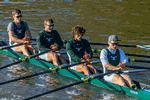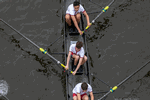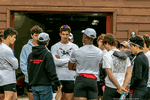Cross Training, Part 1: How Often & What Works
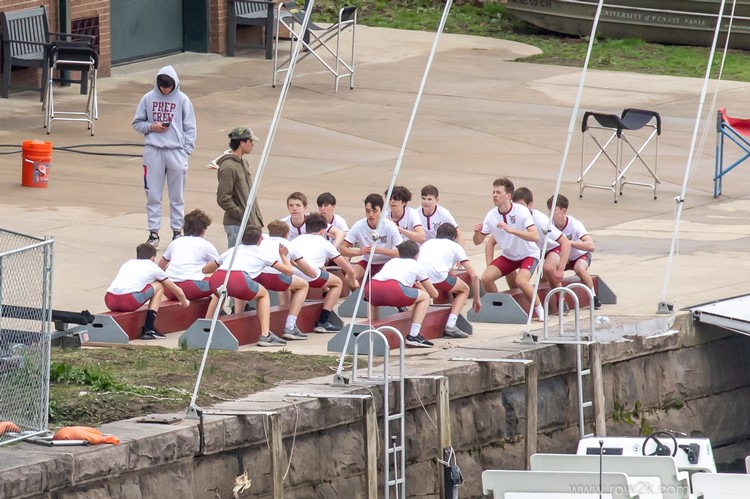
To learn more about this series and see the topics we plan to cover, please visit the Youth Coaches Corner's index page. Youth coaches are more than welcome to contact row2k to get involved in future columns.
This week, the answers we received to the first two questions we asked about Cross Training:
How much cross training do you find helpful in a given week for healthy athletes and what general types of cross training have you found most effective?
CHRIS RICKARD - JACKSON/REED HS - WOMEN'S HEAD COACH
I think cross-training is very helpful, especially the further you are pushing your training. If you’re only doing three sessions a week, they should probably all be on the erg. If you’re doing 5, I’d have at least one cross training and if I were doing any more than 5 I’d say at least half of any additional sessions should be cross-training.
CASSANDRA CUNNINGHAM - POWER OF 3, LLC/P3PE - PERSONAL COACH
Cross training may be valuable in many ways to athletes to build endurance or strength or used in injury recovery, but I also feel it can be misused, so any coach should monitor what type and how much their athlete is doing for cross training.
I believe cross training is great as a second workout, ranging from a run, bike or swim to yoga, band work and stretching. For a one-day cross training workout, I am a personal fan of running. Learning about breathing and pacing on the track is a great cross fit exercise; you can work strength and speed on the stairs or hills; and stretching out the muscles in the pool while working on breathing can be very helpful. If you cannot run, walk, and if you cannot swim, learn water aerobics.
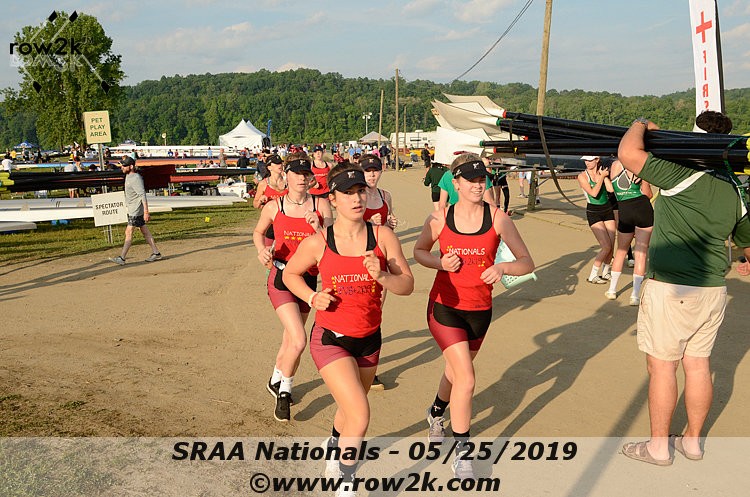
JOHN MARTIN - BRUNSWICK SCHOOL - HEAD MEN'S COACH
In season, we do tend to row almost every day. But we do more cross-training in the off-season, of course. We went on a cross-country skiing team trip last winter which was a lot of fun. We run a fair amount. Some of our guys like the road bike, and we certainly recommend swimming.
DREW COMBS - LITCHFIELD HILLS ROWING CLUB - HEAD COACH
Depends on the season: Winter, we go from 5 days of cross training down to 2 by the end of Feb. Lifting, cross fit style competitions, body circuits, running, bikes, yoga, lots of core.
CATHY COFFMAN - ALBEMARLE HS - HEAD COACH
Our team does a little cross training every day after our on the water training. During the early part of the spring season, before the championship racing begins, we do weight circuits two to three times a week. We typically do circuits at 90 seconds on and 10 seconds to switch stations. This keeps the heart rate up and keeps the athletes moving. I really like the circuits as we combine a few key weights (bench rows, squats, dumbbells rows, RDLs, etc.) with your standard sit-ups, push-ups, wall sits, hills, and a bit of running.
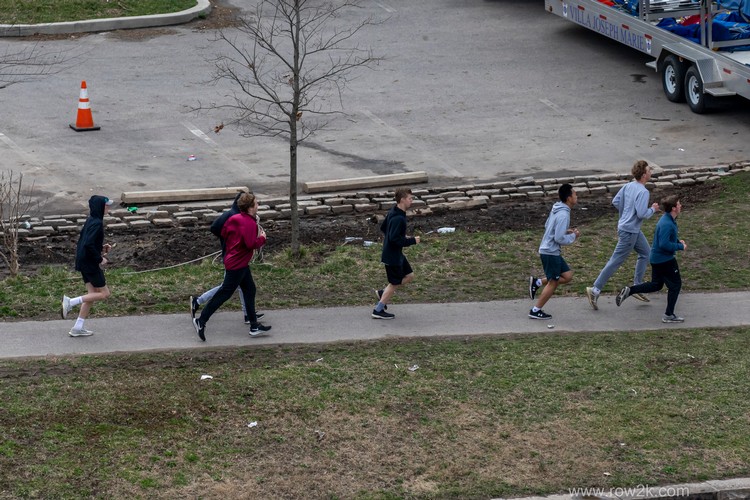
GEORGE KIRSCHBAUM - JUNIORS COACH - AUTHOR OF 'THE DOWN AND DIRTY GUIDE TO COXING'
Part of this is driven by what you have available and is accessible at the time of your day for practice. Running and core training I’ve always tried to maintain in the spring season, and in the off-season, I try to incorporate more different things including weight training and yoga.
WILL PORTER - ST. ANDREWS SCHOOL - HEAD MEN'S COACH
Our 10-week season runs from mid-March to the end of May, so we get our athletes on the water as soon as possible. St. Andrew’s requires our students to be multi-sport athletes, so they are very comfortable with the concept of cross-training. In season, we lift 1-2 times a week, and we work on cardiovascular fitness on long runs during our preseason.
KIRSTEN PRESKENIS - FARMINGTON HS - HEAD WOMEN'S COACH
We typically do cross training to give a mental and physical break from rowing. The amount we need varies based on the group. We generally do running, but sometimes we’ll vote on a fitness video.
RUDY RYBACK - LAKE OSWEGO COMMUNITY ROWING - MEN'S HEAD COACH
In-season, it seems as though the capacity for most HS athletes is six to eight sessions per week, rowing/erging. Beyond that, a little cross training goes a long way, and we tend to use it like a scalpel . . . surgically. Cross-training that helps address muscle imbalances and that keeps the athletes mentally fresh is helpful.
Out-of-season cross-training looks a lot different. The general rule of thumb is that up to 50% of the training volume can AND should be a different modality. As an example, out of four training sessions per week, two of them are non-rowing/erging. Summer and winter modalities tend to be different, so that should be taken into account. During the summer, I encourage the athletes to learn or develop a new sport that ends with a competitive event. This keeps everyone fresh, and competitively-minded, going into the fall.
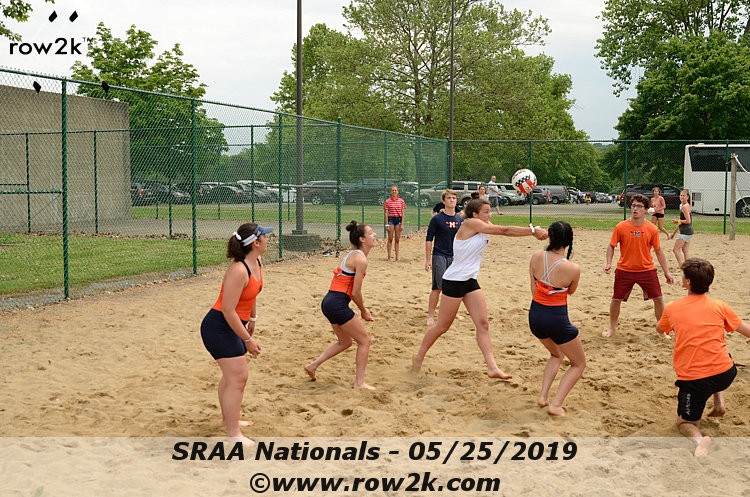
Which specific cross training workouts have you found most helpful for rowing training?
CASSANDRA CUNNINGHAM - POWER OF 3, LLC/P3PE - PERSONAL COACH
Track workouts, stairs, a yoga instructor who knows the sport, and swimming. I know biking is good, too, but that is not my strong suit. I grew up as a runner, running cross country and track all through high school. It’s my jam.
WILL PORTER - ST. ANDREWS SCHOOL - HEAD MEN'S COACH
I’m a huge fan of running. It costs very little, is accessible to everyone, and is good for an athlete’s mental health. For at least the last 35 years, we have had a timed 5.4-mile run on the second day of the season. I want our big guys to be decent runners because they have to carry their body weight in the boat.
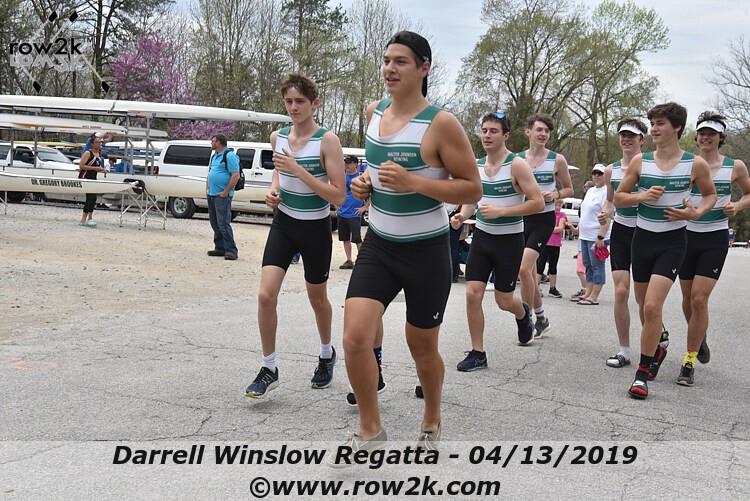
RUDY RYBACK - LAKE OSWEGO COMMUNITY ROWING - MEN'S HEAD COACH
Hard to pin-down one specific workout, but the best training modality for rowing is nordic skiing, by far. From a physiological stand-point, the sports are so similar ,its scary. The high V02 component, balance involved, and the fact that both sports are moving toward a greater power emphasis in training, makes them a great compliment. I suppose the Dreissigackers figured this out by producing their market share over the RowErg and SkiErg.
If you don't live in a winter-type environment, there are options. Nordic Walking, Nordic running (bounding w/ poles), "Moose-hoofing" (Ed, note: we googled it), and roller skiing, are great supplements to your training that are quadrapedal (all four limbs) like rowing. Similarly, rowers and nordic skiers tend to be good at Spartan-like events. Give a Spartan race a try, and you might just find that the agility and complex nature of the event lends itself toward a strong neuro-muscular component, as with rowing.
CATHY COFFMAN - ALBEMARLE HS - HEAD COACH
I find weight circuits especially effective for young adolescent athletes who have not done a lot of lifting before. My more experienced athletes lift and cross train on their own a few days a week. I would love to have my athletes do a lot of running, but somehow, we always have shin issues when we increase the mileage, so we stick to distances shorter than 2 miles. We also do a few short hills everyday and add in lunges, stadium stairs, or body weight hops and/or squats twice a week.
As the season progresses and we get closer to the championship season, and our workouts on the water get more intense, circuit training and other forms of cross training decrease and are almost eliminated in the last few weeks of the season.
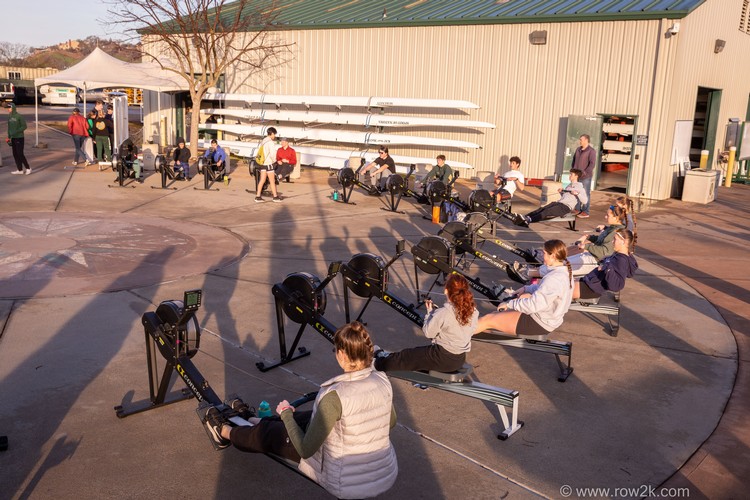
GEORGE KIRSCHBAUM - JUNIORS COACH - AUTHOR OF 'THE DOWN AND DIRTY GUIDE TO COXING'
Sometimes doing a goofy circuit as a team can just be a fun team-building experience. We did one I called “pie plates”: we set up body-weight exercise stations down a long hallway. Everyone got a pair of paper plates that they put under their toes as they got into the plank position. They would hold this position and “walk” via straight arms and tight core to the next station. They did this with a partner. At the station, they’d do whatever exercise was prescribed for a set period of time and then plank-walk to the next station after. At the end of the stations, they would run around the circular hallway back to the starting station, get a minute's break, and then jump back into the rotation. It was goofy, fun, and good work.
DREW COMBS - LITCHFIELD HILLS ROWING CLUB - HEAD COACH
Frankly, I think all kinds of workouts are an important part of training. Our team is not the tallest, so adding the strength of lifting has helped us increase boat speed. But with so many athlete coming in with hamstring and hip issues from other other sports, recent growth, and athletic shoes, we spend a lot of time on mobility which has also been great to avoid injury and improve boat speed.
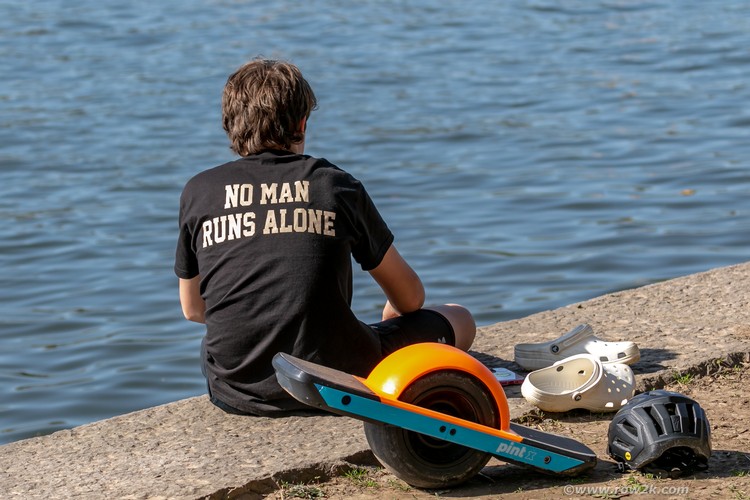
If you enjoy and rely on row2k, we need your help to be able to keep doing all this. Though row2k sometimes looks like a big, outside-funded operation, it mainly runs on enthusiasm and grit. Help us keep it coming, thank you! Learn more.
Comments | Log in to comment |
There are no Comments yet
| |
- Bont Rowing
- Calm Waters Rowing
- Concept 2
- Craftsbury Sculling
- The Crew Classic
- CrewLAB
- Croker
- Durham Boat Co.
- Empacher
- Faster Masters
- Filippi
- Fluidesign
- h2row.net
- HUDSON
- Live2Row Studios
- Nielsen-Kellerman
- Oak Ridge RA
- Peinert Boat Works
- Pocock Racing Shells
- Race1 USA
- RowKraft
- Rubini Jewelers
- Vespoli USA
- WinTech Racing
- Bont Rowing
- Calm Waters Rowing
- Concept 2
- Craftsbury Sculling
- The Crew Classic
- CrewLAB
- Croker
- Durham Boat Co.
- Empacher
- Faster Masters
- Filippi
- Fluidesign
- h2row.net
- HUDSON
- Live2Row Studios
- Nielsen-Kellerman
- Oak Ridge RA
- Peinert Boat Works
- Pocock Racing Shells
- Race1 USA
- RowKraft
- Rubini Jewelers
- Vespoli USA
- WinTech Racing



